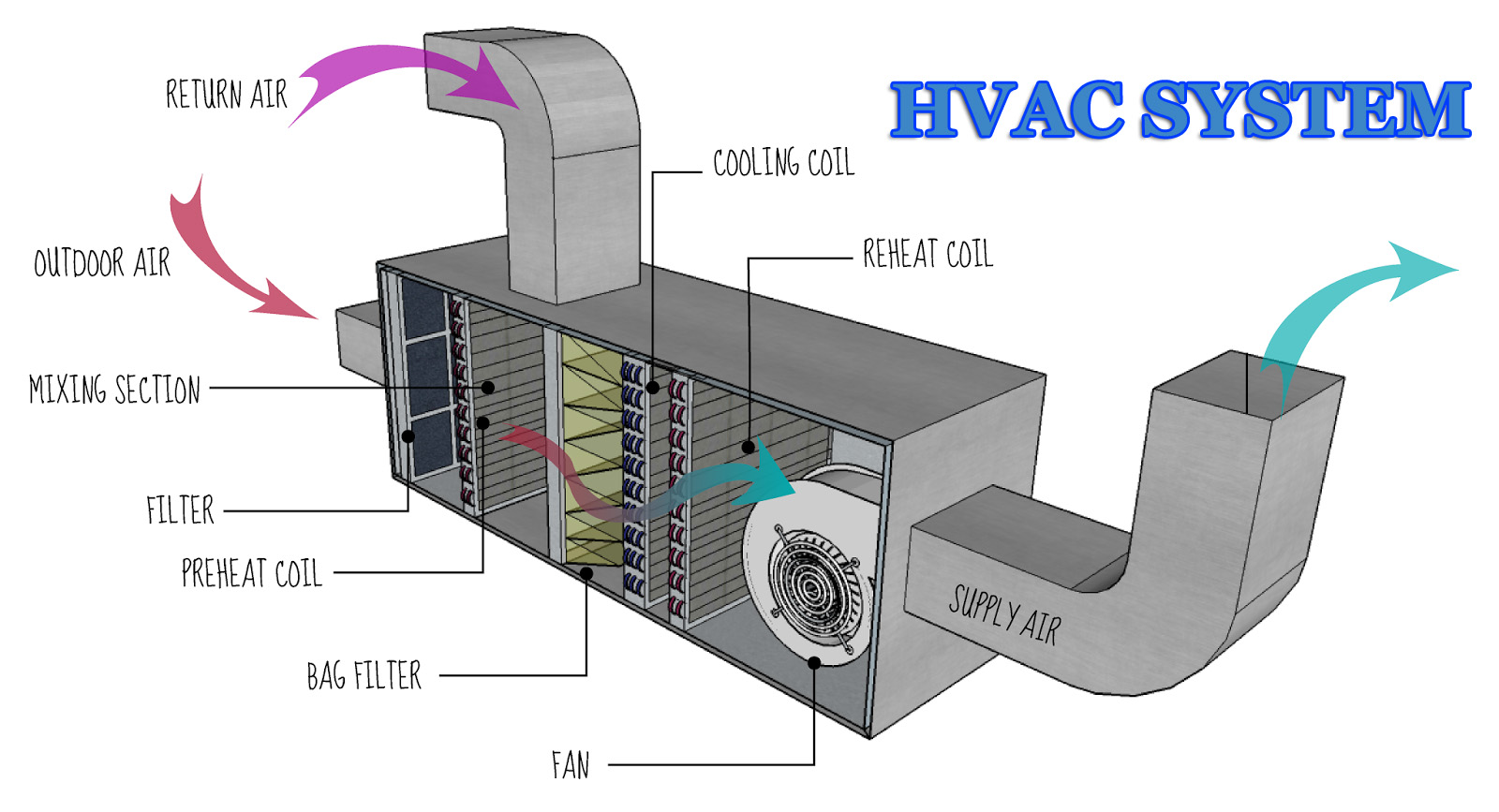In the modern world, where comfort and climate control are paramount, the unsung hero silently working behind the scenes is the HVAC system. Heating, Ventilation, and Air Conditioning (HVAC) systems are the invisible gears that keep our homes, offices, and commercial spaces cozy in winter, cool in summer, and breathable all year round. In this blog post, we’ll dive into the HVAC meaning, explore its components, discuss how HVAC systems work, its importance, and its impact on our daily lives. and introduce various types of HVAC systems.
HVAC Meaning: What is HVAC?
HVAC stands for Heating, Ventilation, and Air Conditioning. It refers to the systems used in buildings to control the indoor environment in terms of temperature, humidity, air quality, and air movement. Heating systems provide warmth in cold weather, ventilation systems ensure the circulation of fresh air, and air conditioning systems cool and dehumidify the air during hot weather. HVAC systems are essential for maintaining comfortable and healthy indoor environments in homes, offices, schools, hospitals, and other buildings.
Heating, Ventilation, and Air Conditioning (HVAC) Systems:

Heating, ventilation, and air conditioning (HVAC) systems are mechanical devices used to heat, cool, and ventilate buildings. They typically use a building’s existing ductwork infrastructure and vents to deliver air throughout a structure. The air is distributed by fans, blowers, or other types of moving machines that can be controlled automatically or manually by building occupants.
How Do HVAC Systems Work:
HVAC systems work by pulling warm air from inside your home through a filter into a compressor. The compressor compresses the warm air into smaller spaces, allowing it to be cooled quickly. After cooling, the air passes through another filter to remove dust and dirt before returning to your living space. The gas within the system is cooled or heated as needed and sent through ducts that distribute the conditioned air throughout your home. An evaporator coil further cools or heats the gas before dispersing it into your rooms or areas.
Components HVAC systems
The components of a typical HVAC system are the following:
-
Compressor:
The compressor provides the energy to move the refrigerant through the system. It also compresses and expands inside an oil-filled compressor, preventing contaminants from entering the refrigerant or damaging moving parts.
-
Evaporator coil:
This is part of what absorbs heat from indoors, cooling down the air before sending it through ducts and vents into your home or office.
-
Heat exchanger:
A heat exchanger transfers thermal energy from one substance to another by directly heating them up with electricity or natural gas, then transferring that heat via pipes back into your home/office. This is where most refrigerants circulate throughout a system.
-
Blower:
The blower distributes conditioned indoor air throughout your home/office wherever you need it, from floor registers in every room up to return grills at ceiling level.
-
Air Ducts and Vents:
An HVAC system’s air ducts and vents are used to distribute the conditioned air throughout a building. Ducts can be made from metal or fiberglass and may or may not be insulated. The size of ducts varies based on the volume of air required to heat or cool spaces in different rooms. Air is pulled into the system by fans, then conditioned by heating and cooling equipment before being distributed through vents throughout the building.
-
Heat Pumps vs. Air Conditioners:
Heat pumps are more efficient than air conditioners, but they can be used in a variety of applications. Heat pumps can also be used to heat and cool the home. Heat pumps are more expensive than air conditioners, but they can be used to heat and cool the home.
Types of HVAC Systems
Here are some types of HVAC Systems:
1. Heating and Cooling Split Systems:
These systems consist of an outdoor unit and an indoor unit. The outdoor unit contains the compressor, condenser coil, and fan motor, while the indoor unit is typically located near windows for efficient distribution of heated or cooled air via ductwork.
2. Hybrid Split System:
A hybrid split system uses a heat pump for both heating and cooling. It switches between an air conditioner in the summer and a heat pump in the winter, ensuring year-round comfort.
3. Duct Free (Mini-Split):
Ductless air conditioners, also known as mini-splits, offer cooling without the need for ductwork. They are efficient but may have higher installation and maintenance costs.
4. Packaged Heating and Air:
This system combines a furnace, air handler, and indoor blower coil in a single unit, often located in the attic or crawlspace.
Advantages Of HVAC Systems:
HVAC systems offer several advantages. They maintain indoor comfort throughout the year, are energy-efficient, and can be tailored to specific needs and preferences. They are also reliable and cost-effective, saving money on energy bills.
Disadvantages Of HVAC Systems:
While HVAC systems have numerous benefits, they can be expensive to install. The average cost is around $3,600, which might not be necessary for smaller buildings that could use ductless mini-split systems. Additionally, some HVAC systems can be noisy, disrupting peace and quiet in your home.
Also Read: Basics of Building Construction Process Step by Step
Final Thoughts on HVAC systems:
HVAC systems are very important for your home or office. They can keep you comfortable and ensure you don’t have to pay high electricity bills every month. However, they are not cheap, so it is important to choose the right one in the first place. This post will guide you through all the different types of HVAC systems and help you decide which one is right for your needs.



